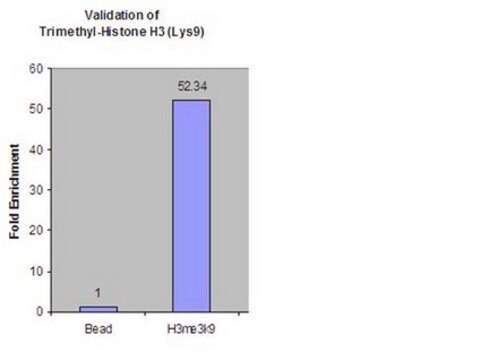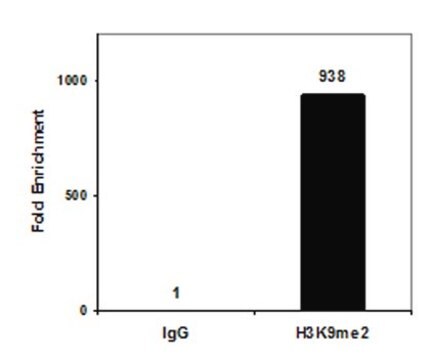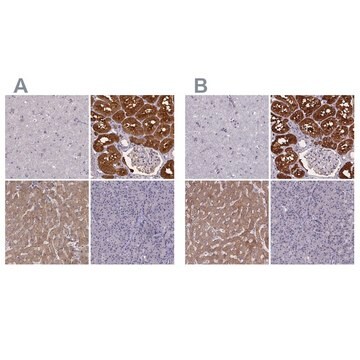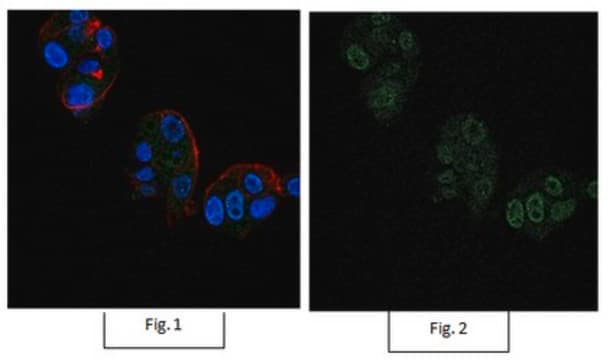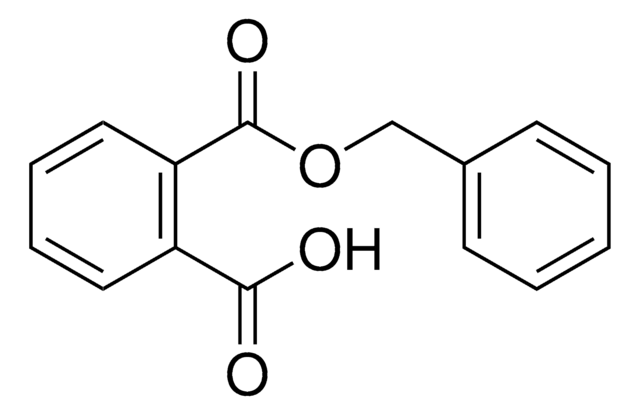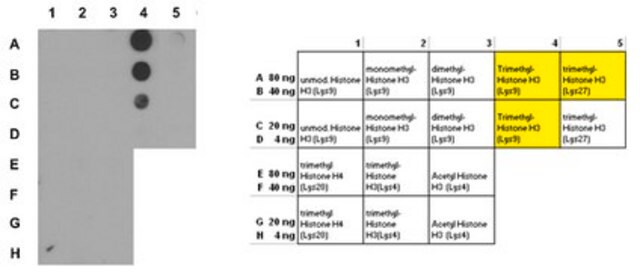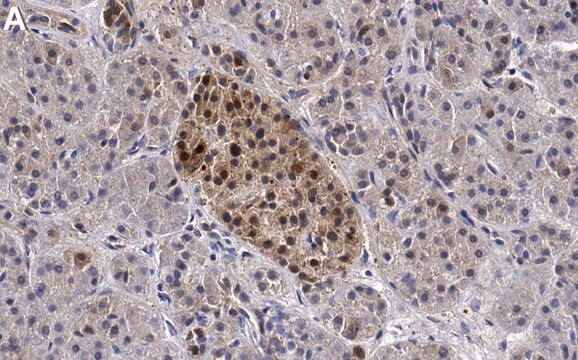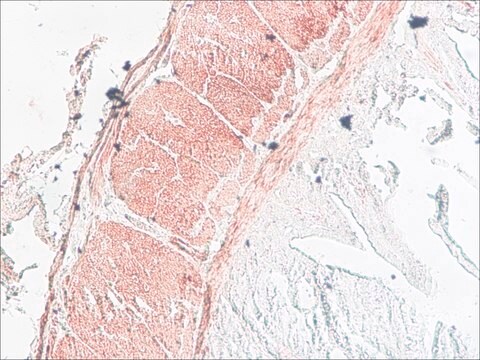05-1242-S
Anti-trimethyl-Histone H3 (Lys9) Antibody, clone 6F12-H4, Trial Size
clone 6F12-H4, from mouse
Synonyme(s) :
H3K9me3, Histone H3 (trimethyl K9), H3 histone family, member T, Histone 3, H3, Histone cluster 3, H3
About This Item
Produits recommandés
Source biologique
mouse
Niveau de qualité
Forme d'anticorps
purified antibody
Type de produit anticorps
primary antibodies
Clone
6F12-H4, monoclonal
Espèces réactives
mouse, human
Technique(s)
ChIP: suitable (ChIP-seq)
dot blot: suitable
immunofluorescence: suitable
inhibition assay: suitable (peptide)
western blot: suitable
Isotype
IgG1κ
Numéro d'accès NCBI
Numéro d'accès UniProt
Conditions d'expédition
wet ice
Modification post-traductionnelle de la cible
trimethylation (Lys9)
Informations sur le gène
human ... H3C1(8350)
mouse ... H3C1(360198)
Description générale
Spécificité
Immunogène
Application
Representative data from a previous lot. Sonicated 3T3 L1 chromatin was subjected to chromatin immunoprecipitation using anti- trimethyl-histone H3 (Lys9) and the Magna ChIP G (Cat. #17-611) Kit. Successful immunoprecipitation of trimethylhistone H3 (Lys9) associated DNA fragments was verified by qPCR using primers flanking the p16 promoter.
Peptide Inhibition Analysis:
Peptide blocking assay demonstrates distinct preference of the antibody for the trimethyl form vs. the dimethyl form.
Chromatin Immunoprecipitation (ChIP):
ChIP analysis of known chromosomal Suv39h targets (H3K9me3 in major satellites, mouseES cells).
Dot Blot Analysis:
Dot-blot analysis demonstrating specificity of anti-H3K9me3, clone 6F12-H4 for trimethyl Lys9 of histone H3.
Epigenetics & Nuclear Function
Histones
Qualité
Western Blot Analysis: A 0.5 – 5 μg dilution of this lot detected trimethyl histone H3 (Lys9) in HeLa acid extracts.
Description de la cible
Forme physique
Stockage et stabilité
For maximum recovery of product, centrifuge the vial prior to removing the cap. Avoid freezing, which can damage IgG and affect product performance.
Remarque sur l'analyse
HeLa Acid Extract
Clause de non-responsabilité
Vous ne trouvez pas le bon produit ?
Essayez notre Outil de sélection de produits.
Code de la classe de stockage
12 - Non Combustible Liquids
Classe de danger pour l'eau (WGK)
WGK 1
Point d'éclair (°F)
Not applicable
Point d'éclair (°C)
Not applicable
Certificats d'analyse (COA)
Recherchez un Certificats d'analyse (COA) en saisissant le numéro de lot du produit. Les numéros de lot figurent sur l'étiquette du produit après les mots "Lot" ou "Batch".
Déjà en possession de ce produit ?
Retrouvez la documentation relative aux produits que vous avez récemment achetés dans la Bibliothèque de documents.
Notre équipe de scientifiques dispose d'une expérience dans tous les secteurs de la recherche, notamment en sciences de la vie, science des matériaux, synthèse chimique, chromatographie, analyse et dans de nombreux autres domaines..
Contacter notre Service technique